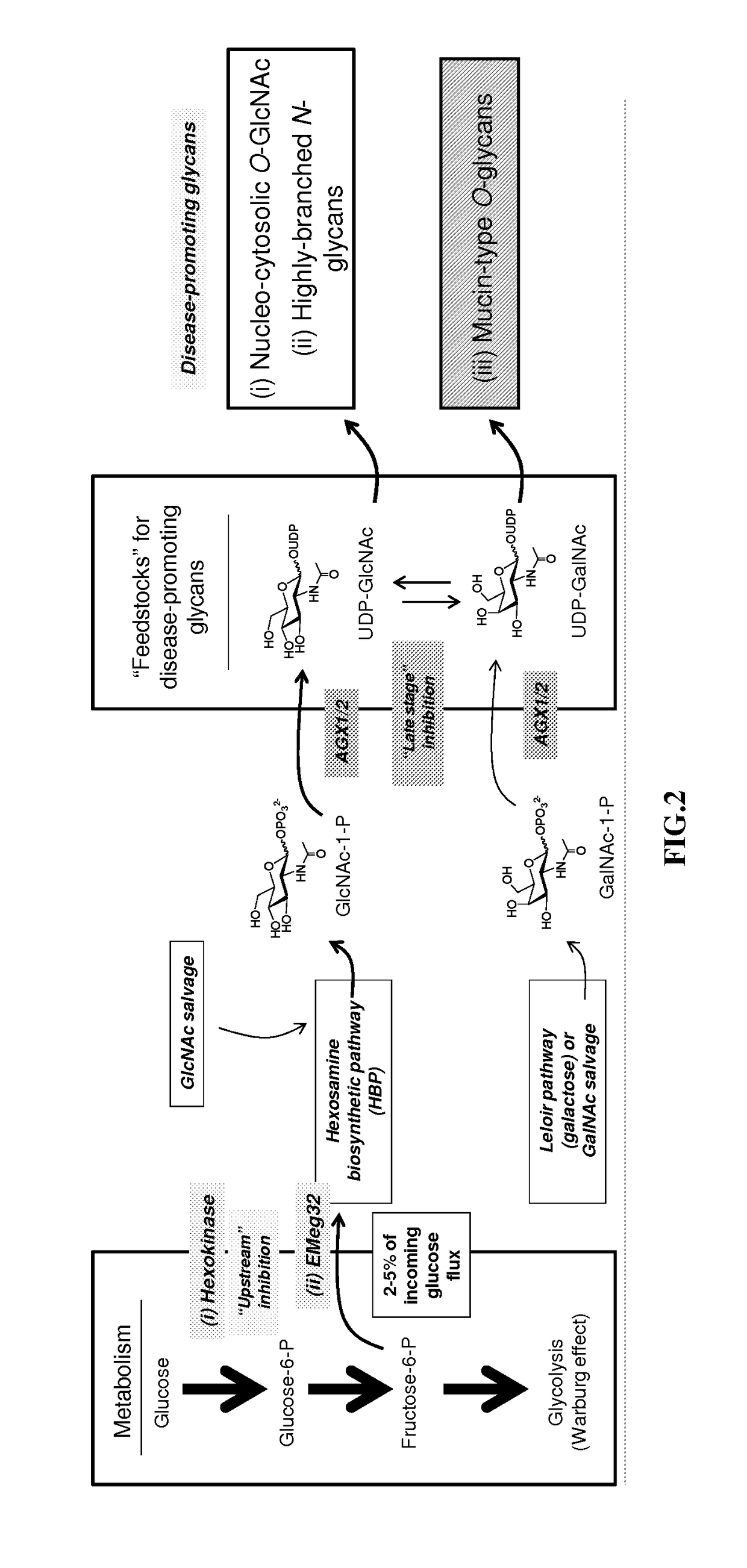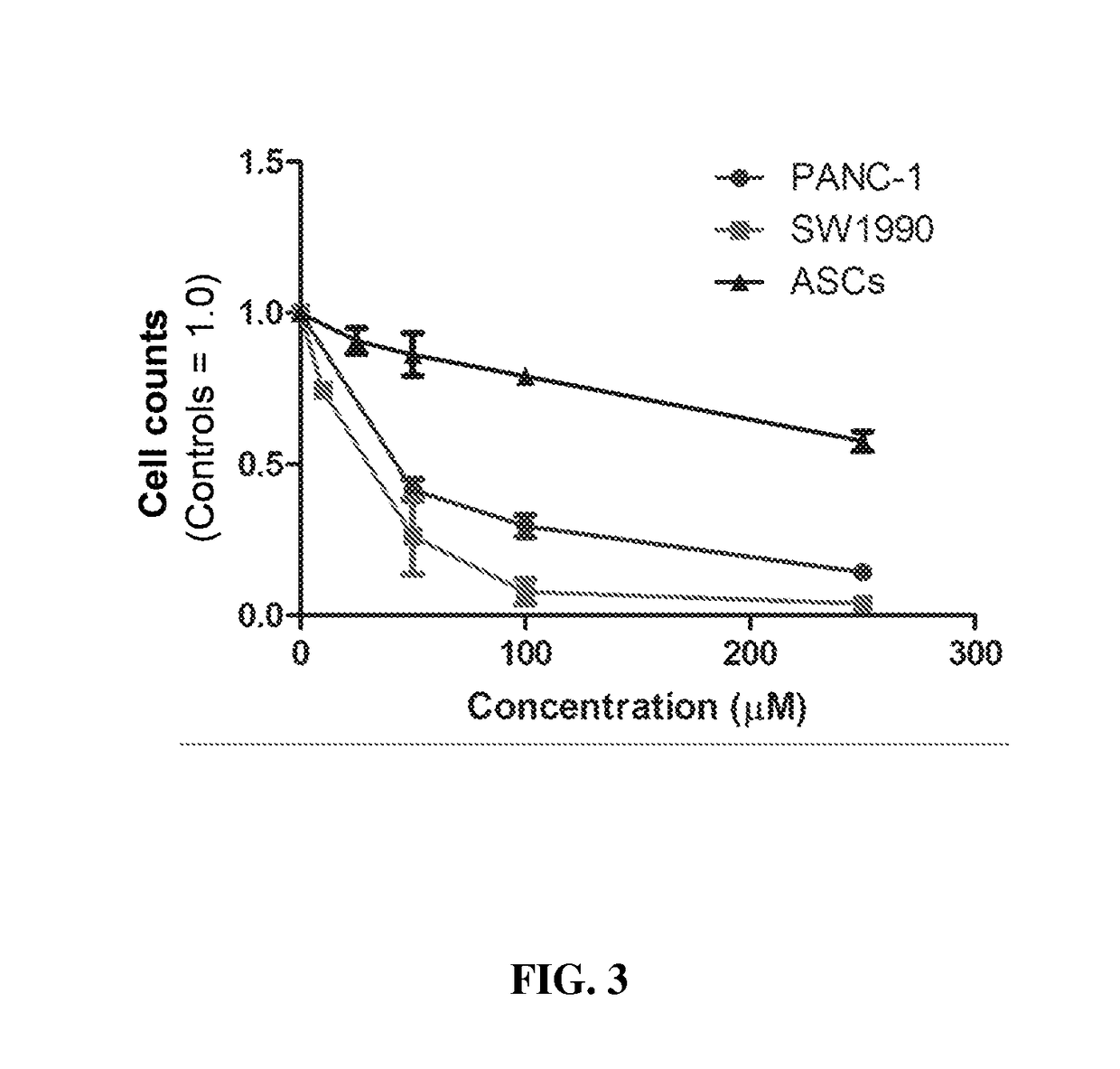Use of uap inhibitors to inhibit flux through the hexosamine biosynthetic pathway
- Summary
- Abstract
- Description
- Claims
- Application Information
AI Technical Summary
Benefits of technology
Problems solved by technology
Method used
Image
Examples
example 1
ity Test
[0261]Cells were incubated with a range of concentrations of UAP inhibitors (typically at 0, 10, 25, 50, 100, and 150 μM) for time periods up to 72 hours (depending on the assay) and cytotoxicity was measured using standard assays. For example, esterase-activated fluorescence dyes were used in live / dead assays coupled with quantification by flow cytometry, apoptosis was measured by DNA fragmentation assays, and metabolic activity was measured by the MTT assay.
example 2
iferation Assay
[0262]Cells were incubated at a range of concentrations of the UAP inhibitors (typically at 0, 10, 25, 50, 100, and 150 μM) and the number of cells were quantified, typically by automated counting (e.g., with a Coulter Counter Z2 instrument) after 1, 2, 3, or 5 days of exposure.
example 3
Biochemical Assay
[0263]A published method (Chemical Communications, 6976-6978 (2009); Chemistry—A European Journal 16, 13343-13345 (2010)) that measures the biosynthetic conversion of GlcNAc analogs to UDP-GlcNAc by AGX1 and AGX2 (analyzed separately) was followed. Instead of using a single substrate, samples were co-incubated with a standard concentration of GlcNAc-1-P (the natural substrate that was converted to UDP-GlcNAc, which was quantified as the endpoint of the assay) and a 0, 0.25×, 0.5×, 1.0×, 2.5×, and 5.0×-fold excess of Glc2Bz-1-p and / or additional analogs in the present invention.
[0264]Gal2Bz (an alternative AGX / UAP inhibitor with potential isoform-specific activity) and Man2Bz (the negative control) were prioritized for testing.
PUM
| Property | Measurement | Unit |
|---|---|---|
| Fraction | aaaaa | aaaaa |
| Fraction | aaaaa | aaaaa |
| Fraction | aaaaa | aaaaa |
Abstract
Description
Claims
Application Information
 Login to View More
Login to View More - R&D
- Intellectual Property
- Life Sciences
- Materials
- Tech Scout
- Unparalleled Data Quality
- Higher Quality Content
- 60% Fewer Hallucinations
Browse by: Latest US Patents, China's latest patents, Technical Efficacy Thesaurus, Application Domain, Technology Topic, Popular Technical Reports.
© 2025 PatSnap. All rights reserved.Legal|Privacy policy|Modern Slavery Act Transparency Statement|Sitemap|About US| Contact US: help@patsnap.com



